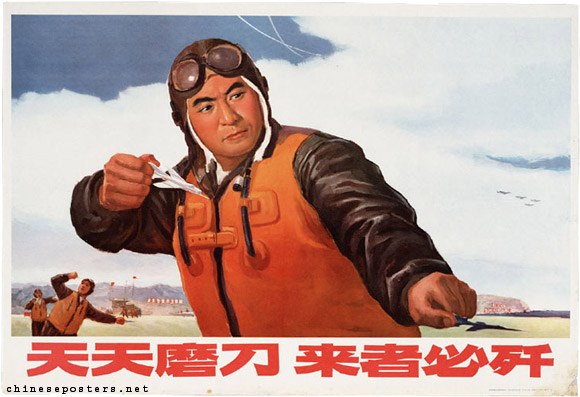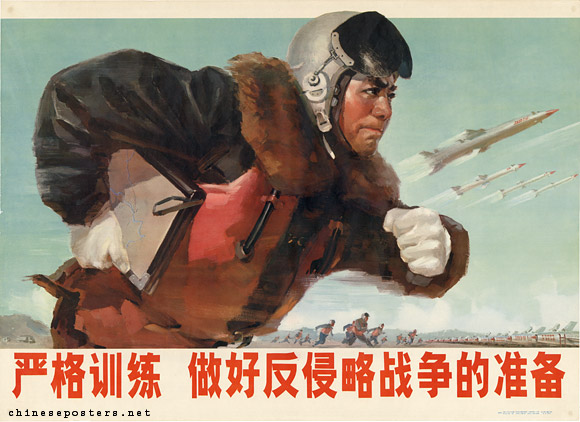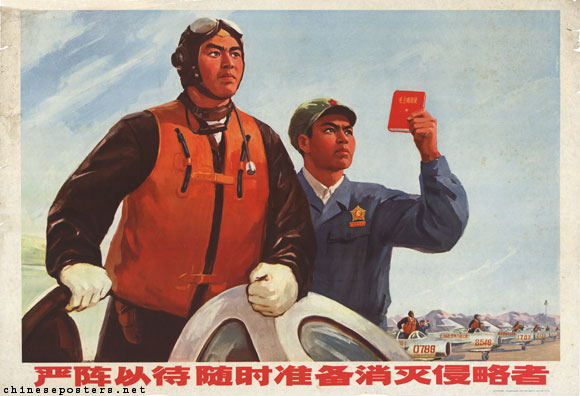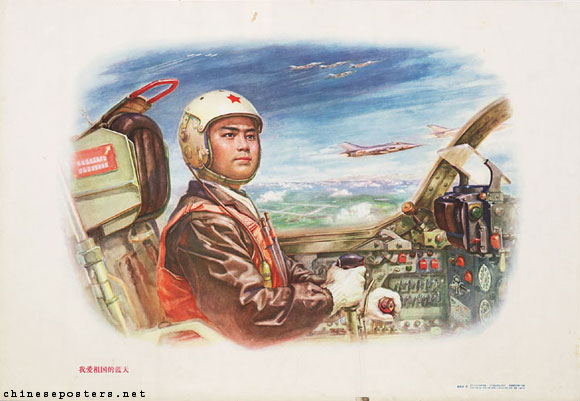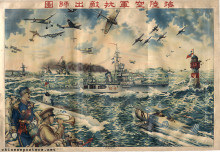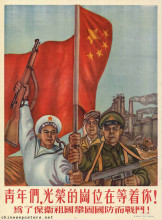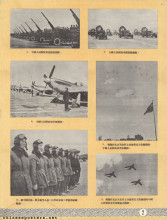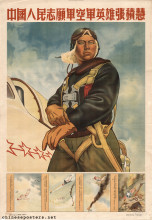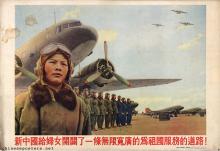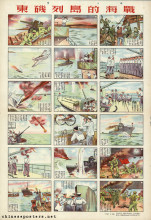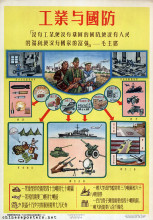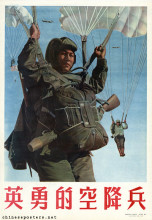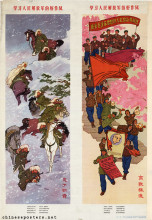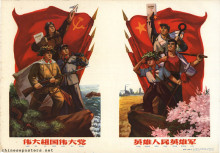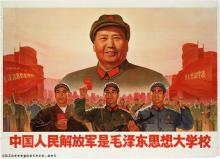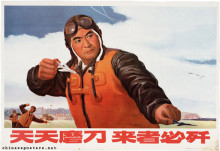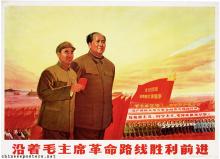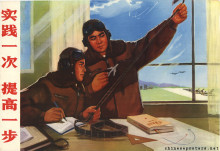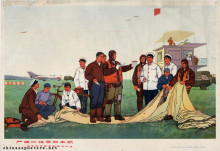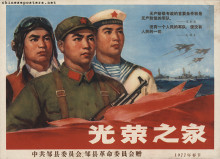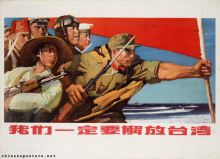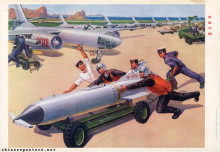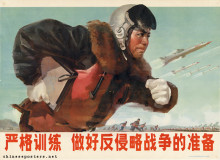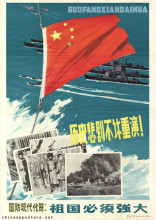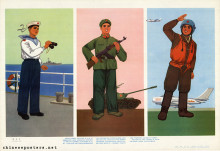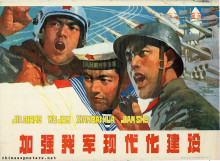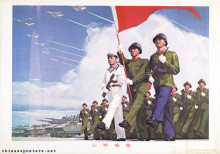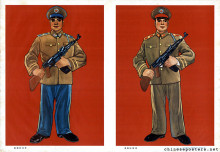Sharpening the knife day after day, intruders must be annihilated, 1970
The People's Liberation Army Air Force (PLAAF, 中国人民解放军空军) is one of the largest in the world, but most of its planes are based on technology from the 1950s and 1960s, and over 90 percent are said to be obsolete. Chinese pilots have limited time in the air, limited experience flying independent of ground control, and minimal experience flying over water. The PLAAF's capabilities to operate beyond the borders are thus compromised; although it may participate in short offensive operations against Taiwan or in the Spratly Islands region, its main objective is to help defend Chinese cities.
In line with the political demands to modernize, the PLAAF has been actively engaged in upgrading its old equipment and acquiring new. The need to look abroad for acquisitions is called for, as the development of indigenous aircraft, such as the F-10 (based on the Israeli Lavi, estimated to become operational in 2005) and the FB-7 interdictor/strike aircraft (which entered the prototype-stage in 1988 but still is lacking an adequate engine), remains unsatisfactory because of primitive manufacturing facilities. A similar situation exists in related fields such as avionics and weaponry.
Train rigorously, do good in preparing to counter a war of aggression, 1978
A major breakthrough was the acquisition of advanced SU-27 fighter planes and later versions from Russia. In the early 1990s, a number of agreements were reached with Moscow to buy some 50 of these Sukhoi planes for hard currency. The aircraft was seen as such a timely addition to the fleet of antiquated MiGs that both sides entered into an agreement for licensed production. It is unlikely that this agreement will contribute to the development of a hi-tech military manufacturing base: China will primarily assemble kits imported from Russia.
Stand in combat readiness, be always prepared to eliminate the aggressor, 1970
The SU-27 has alleviated some of the PLAAF's weaknesses, in particular in light of Taiwan's acquisition of advanced aircraft. But a large number of SU-27's may also improve the Chinese strategic posture toward Vietnam and the other nations in the region with which there's a long-simmering conflict over the Spratly Islands.
I love the blue skies of the mother country, 1978
[Please note: this text dates from ca. 2000]
Flemming Christiansen & Shirin Rai, Chinese Politics and Society - An Introduction (London: Prentice Hall, 1996)
Andrew J. Nathan & Robert S. Ross, The Great Wall and the Empty Fortress - China’s Search for Security (New York: W.W. Norton & Company, 1997)
